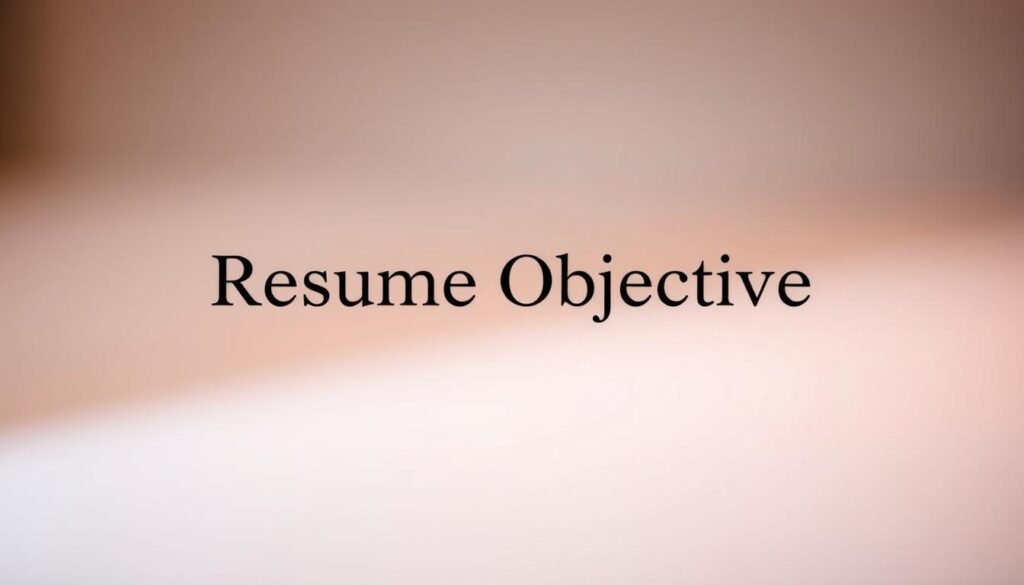Did you know that 66% of professionals have considered switching fields, according to iHire’s 2020 data? If you’re thinking about a new career, you’re not alone. But how do you make the leap when your work experience doesn’t directly align with your desired role as a manager overseeing new projects?
The answer lies in your resume. A well-crafted document can bridge the gap by showcasing your transferable skills. These are abilities like problem-solving, communication, and leadership that are valuable across industries, especially when embarking on a new career or changing careers.
One effective strategy is using a combination resume format. This highlights both your skills and experience, making it easier for employers to see your potential. Whether you’re moving from customer service to digital marketing or another field, this guide will show you how to create a standout document.
Key Takeaways
- 66% of professionals have considered switching fields.
- Transferable skills are key to a successful transition.
- A combination resume format highlights both skills and experience.
- Certifications, like Wharton Online, can boost credibility.
- Real examples and templates are available for download.
What is a Career Change Resume?
Switching industries can feel daunting, but a tailored resume can make all the difference. Unlike traditional resumes that focus solely on past job titles, a career-change resume emphasizes your transferable skills. These are abilities that apply across various roles and industries, such as problem-solving, communication, and leadership.
![]()
Hiring managers often look for candidates who can adapt quickly to a new role. A career-change resume acts as a bridge, translating your work experience into relevant skills for the desired position. For example, someone transitioning from customer service to marketing might highlight their ability to manage client relationships and analyze feedback.
Understanding the Purpose
The goal of a career-change resume is to showcase your potential, even if your past roles don’t directly align with the target industry. It starts with a strong resume objective that clearly states your intentions and highlights your key strengths. This approach helps employers see how your background can benefit their team.
Why Transferable Skills Matter
Transferable skills are the backbone of a successful transition. They demonstrate your ability to apply your expertise in new contexts. For instance, project management experience can be valuable in both tech and healthcare fields. Quantifying your achievements, like “increased customer satisfaction by 20%,” adds credibility and shows measurable impact.
How to Identify Your Transferable Skills
Your past roles hold valuable skills that can open doors to new opportunities. Whether you’re moving into a different field or taking on a new role, understanding your transferable skills is essential. These are abilities you’ve developed in previous jobs that can be applied to various industries.

Analyzing Your Previous Roles
Start by reviewing your work experience. Look for tasks that required problem-solving, leadership, or communication. For example, a sales executive might highlight pitch deck creation, which is valuable for copywriting roles. Similarly, a front-end developer can showcase HTML/CSS project examples to demonstrate technical skills.
Use the STAR method (Situation-Task-Action-Result) to document your achievements. This approach helps you clearly explain how you’ve made an impact in previous positions. For instance, “Increased team productivity by 15% through streamlined project management.”
Categorizing Hard and Soft Skills
Divide your skills into two categories: hard and soft. Hard skills are specific, teachable abilities like Google Analytics or coding. Soft skills, such as team collaboration or adaptability, are equally important and often transferable across industries.
Tools like the O*NET Online Tool can help you translate your skills into new contexts. For example, a retail manager’s organizational skills can be mapped to project management roles. Additionally, consider taking courses on platforms like Udemy or Wharton to enhance your skill set.
Crafting a Compelling Resume Objective
Your resume objective is the first impression you make on potential employers. It’s a short statement at the top of your resume that highlights your goals and what you bring to the table. A strong objective can grab attention and set the tone for the rest of your application.

Writing a Strong Objective Statement
A good resume objective is clear, concise, and tailored to the position you’re applying for. Start by mentioning your current skills and quantifiable achievements. For example, “Driven professional seeking to leverage 3+ years of experience in project management to transition into a digital marketing role.” Avoid vague statements like “Looking for a challenging opportunity in a new field.”
Use action verbs like “Leverage,” “Transition,” and “Apply” to show initiative. Incorporate industry-specific buzzwords such as SaaS, Agile, or KPI to align with job descriptions. For instance, “Experienced in Google Analytics and CRM systems, aiming to apply data-driven strategies in a marketing new role.”
Tailoring Your Objective to the New Role
Customize your resume objective for each application. Research the company and the job description to identify key skills they value. For example, if the role requires strong communication, highlight your experience in team collaboration or client presentations.
Consider adding certifications like Wharton Online’s digital marketing program to boost credibility. Align your objective with your LinkedIn profile summary for consistency. This approach ensures your resume objective resonates with hiring managers and bridges the gap between your past experience and the new role.
Structuring Your Career Change Resume
Crafting a resume that stands out requires the right structure and format. A well-organized document helps hiring managers quickly understand your value. For those transitioning into a new field, the layout is even more critical.

Choosing the Right Resume Format
There are three main resume formats: chronological, functional, and combination. The chronological format focuses on work history, while the functional format emphasizes skills. For career changers, the combination resume is often the best choice. It blends both skills experience and work experience section, making it easier to highlight transferable abilities.
For example, a combination resume might allocate 60% to skills and 40% to experience. This balance ensures your technical skills and achievements are front and center, even if your job titles don’t align perfectly with the new role.
Combination Resume: A Strategic Choice
The combination format is ideal for showcasing your adaptability. Start with a strong objective statement, followed by a detailed skills section. Then, include your work experience section, focusing on achievements rather than job descriptions. Finally, add an education and certifications section to round out your qualifications.
Proper formatting is key. Use clear headings, bullet points, and ample white space to improve readability. Avoid crowded text, as it can overwhelm recruiters. Tools like GitHub or Behance links can also enhance your portfolio’s visibility.
Highlighting Relevant Work Experience
When transitioning to a new field, your past work experience becomes a powerful tool. It’s not just about the roles you’ve held but how you frame them to align with your desired job. Start by identifying tasks that showcase your adaptability and problem-solving abilities.
Focusing on Transferable Skills
Your previous roles likely include skills that apply across industries. For example, if you revamped scripts and increased customer satisfaction by 20%, this demonstrates your ability to improve processes. Use the PAR (Problem-Action-Result) framework to highlight these achievements.
Consider creating an industry translation glossary. For instance, if you’re moving from healthcare to PR, reframe “Patients” as “Clients.” This small change can make your resume more relatable to hiring managers in your target industry.
Quantifying Your Achievements
Numbers speak louder than words. Instead of listing tasks, focus on measurable outcomes. For example, “Debugged SaaS applications using Git and XDebug, reducing errors by 15%.” This approach shows the tangible impact of your work experience.
If you’re transitioning from retail to PR, highlight metrics like fundraising success. For instance, “Managed a campaign that raised $50,000 in three months.” These details make your achievements stand out and prove your value in a new role.
Showcasing Education and Certifications
Your educational background and certifications can significantly boost your chances in a new field. They demonstrate your commitment to learning and provide tangible proof of your technical skills. Whether you’re transitioning into marketing, tech, or another industry, this section is your opportunity to shine.
Including Relevant Coursework
When listing your education, focus on coursework that aligns with your target role. For example, if you have a BA in Communications, highlight classes like advertising or public relations. This shows employers you have foundational knowledge in the field.
If you’ve taken specialized courses on platforms like Coursera or EdX, include them too. For instance, a course on Data Ethics can be highly relevant for roles in tech or analytics. Always prioritize recent and applicable projects to keep this section fresh and impactful.
Listing Certificates and Online Courses
Certifications like Google Analytics or HubSpot can make your resume stand out. These credentials validate your expertise and show you’re up-to-date with industry standards. For example, Wharton Online’s leadership certificates are highly regarded and can add significant value.
When listing online courses, include completion dates and verification methods. This adds credibility to your accomplishments. Use a “Certification Relevance Scale” to prioritize those most aligned with your target role. For instance, a certification in Agile methodologies is more relevant for project management than graphic design.
Finally, don’t forget to highlight scholarships or awards. These demonstrate excellence and can set you apart from other candidates. Leverage alumni networks to further enhance your professional connections and opportunities.
Conclusion
Transitioning to a new field is easier when you have a clear plan and the right tools. Start by following a 5-step checklist: choose the right format, craft a strong objective, highlight your skills, showcase relevant experience, and include certifications. Platforms like Wharton Online can help you build new expertise.
Create a 0-3-6 month timeline to track your progress. Optimize your LinkedIn profile with industry-specific keywords and connect with professionals in your target industry. Networking is key—attend events and join communities to expand your opportunities.
Avoid common mistakes like keyword stuffing or generic objectives. Instead, focus on measurable achievements that demonstrate your value. For example, “Increased sales by 20% through targeted campaigns.”
Ready to take the next step? Download our guide and explore templates to create a standout application. With dedication and the right strategy, you can successfully transition into your desired position.
FAQ
What is a career change resume?
A career change resume is a document designed to help you transition into a new field by emphasizing transferable skills, relevant accomplishments, and experiences that align with the new role.
Why are transferable skills important in a career change resume?
Transferable skills are crucial because they demonstrate how your previous experience can add value in a new industry or position, even if your background isn’t directly related.
How do I identify my transferable skills?
Start by analyzing your previous roles, focusing on tasks and projects that align with the new position. Categorize these into hard skills (technical abilities) and soft skills (communication, leadership).
What should I include in a resume objective for a career change?
A strong objective statement should highlight your transferable skills, express enthusiasm for the new role, and explain how your background makes you a great fit for the position.
What is the best resume format for a career change?
A combination resume is often the best choice as it allows you to showcase both your skills and work experience prominently, making it easier to highlight transferable abilities.
How can I highlight relevant work experience on a career change resume?
Focus on transferable skills and quantify your achievements with measurable results. Use specific examples to show how your past experience can benefit the new role.
Should I include education and certifications on a career change resume?
Yes, especially if they are relevant to the new field. Include coursework, certificates, and online courses that demonstrate your commitment to gaining new skills.





